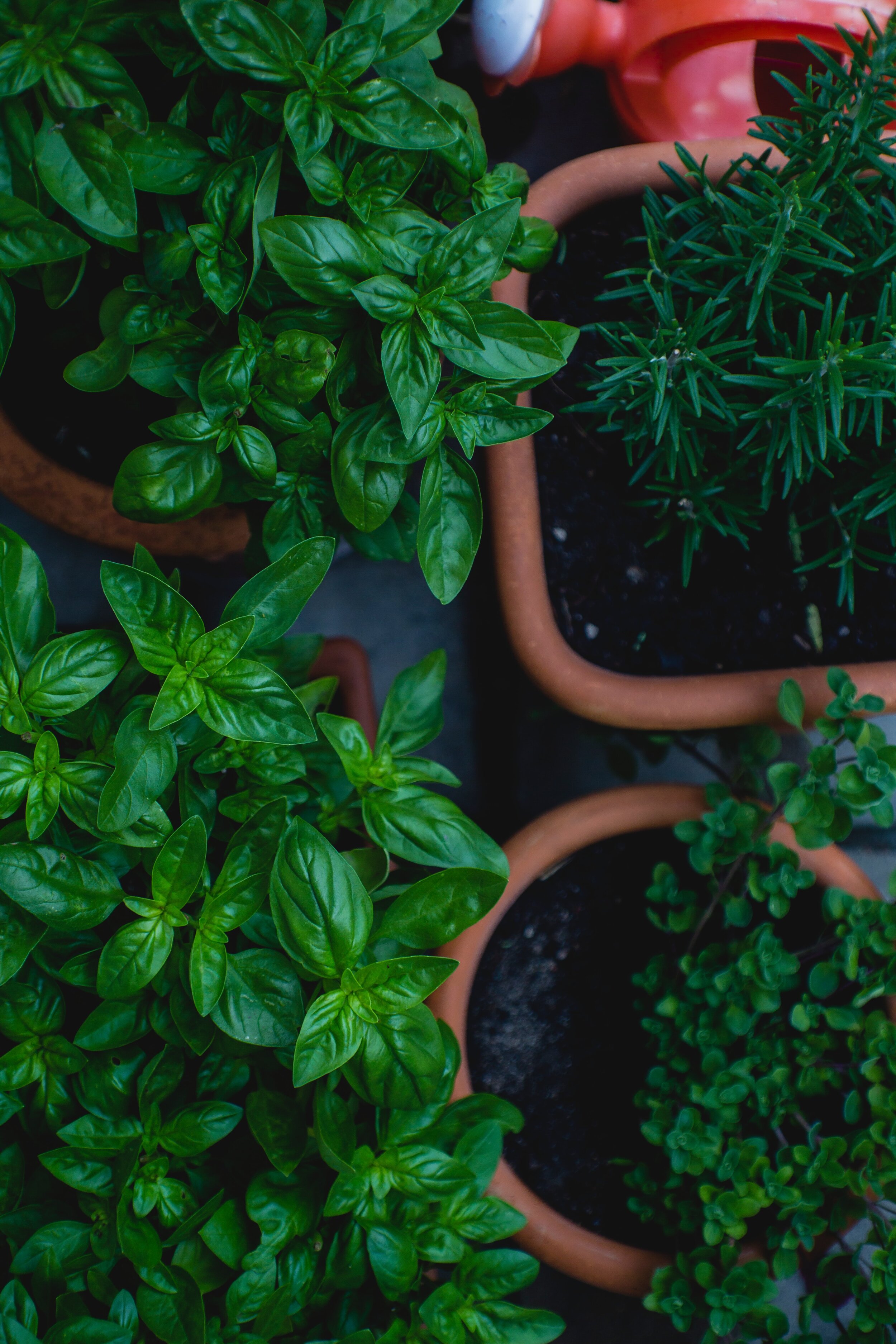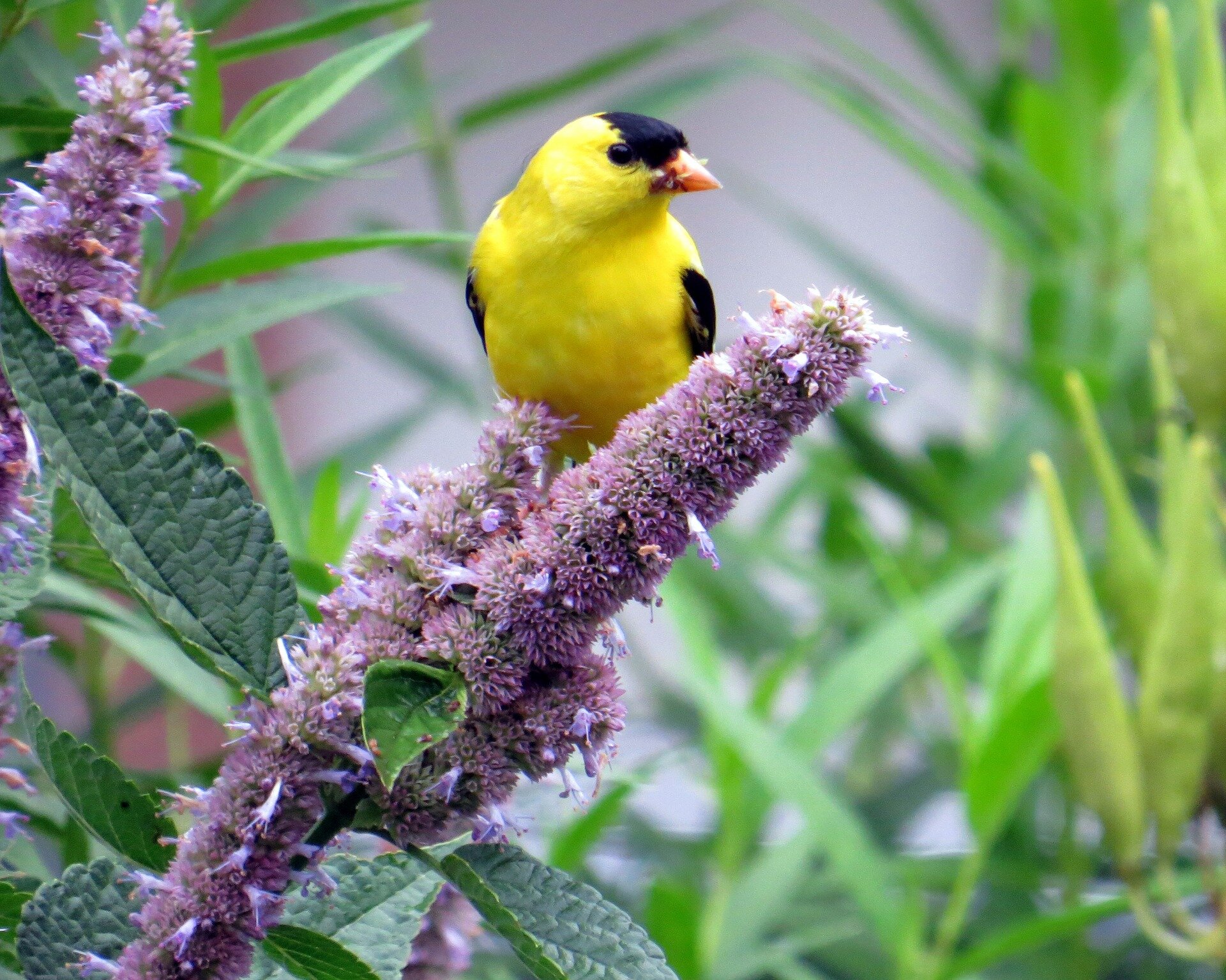This past weekend I helped answer a question for The Witch Daily Show Podcast for a witch who needed tips on gardening herbs for the first time this year. This is the perfect time of the year to start a small garden, now that the weather is turning warmer. Beltane energy also welcomes in the bursting growth of nature and the season of the Fae. Gardening has many benefits: not only do you create a space springing with life, you also create a space teeming with magic. It is also a peaceful activity to help you feel grounded, connect you with nature, and also get you outside for some sunshine!
I started to seriously garden last year and have expanded my gardening this springtime, finding it has found given me deep comfort during this challenging time. The goal of this post is to share with you some of a handful of herbs I recommend trying to garden because they are some of the easiest to grow and care for. You can grow them from seed or easily obtain them from nurseries. They grow well in garden beds but would also be happy in containers as well. Additionally, they are herbs bursting with magical uses, but are so common that they will not draw too much attention from your family while you are sheltering in place at home.
1. Thyme: Folklore says that Greek soldiers bathed in thyme-soaked water to gain bravery, while Scottish Highlander warriors opted to drink thyme tea to do the same. Ancient Romans washed their faces with thyme-infused water to enhance their attractiveness. For me, thyme has been something I like to use in my healing and purification spellwork. It would be an excellent addition to spell work during the current pandemic. I have also felt thyme is as an herb that attracts Fae activity in the garden. Thyme does well in sun or partial shade, in a bed or in containers.
2. Lemon Balm: Lemon Balm doesn’t get enough attention, but in my opinion, is one of the easiest herbs to grow. It was planted at temples for Artemis to keep the bees who resided there happy. I have found it to be a loving plant, best for gentle healing and love. It brings a bright feeling of joy back to situations that feel have gone dull. Lemon Balm does well in sun or partial shade, in containers or in a bed. It grows rapidly, so be mindful to trim frequently.
3. Hyssop: I only just discovered hyssop, having found some at my local nursery late in the season on sale. I am so thankful I did! I took the plants home and was delighted to find that the perennial grew an abundance of inviting blue/purple flowers all summer and into the fall. Hyssop can be used for purification, protection, and healing magic. As suggested by Patti Wigington, you can braid together stalks of hyssop and hang at your door to ward off evil from entering the home. The blue flowers remind me of the throat chakra, and holistically hyssop can be used in teas to bring comfort to sore throats and coughs. After finding this out I have decided that at the end of the harvest season I will be making a “Throat Chakra Lozenge” with hyssop, lemon balm, and horehound.
4. Sage: Even though most people think of white sage for its purifying properties, common garden sage has magical potency as well. Sage in your garden will protect your property. Sage feels like a warm, glowing energy and appears as a golden guardian to me. You can use garden sage in purification spell work, but also to conjure wisdom and luck. Garden Sage is also wonderful in homemade herbal wands if you do not use smudge sticks. Sage does well in sun and can be grown in beds and containers.
5. Sweet Woodruff: A delightfully fragrant perennial, this low ground cover has been a joy to have in my garden. Its white flowers begin to bloom in May and are an inviting vanilla scent that do well in potpourris. Sweet Woodruff has been used in May Wines and more recently highlighted in a Beltane-themed cake. Called “The Master of the Woods,” you can use sweet woodruff in your summer magic, lust spells, and prosperity spells. For all of its potent nature, I have found it to be an approachable and easy plant to work with. Sweet Woodruff makes himself at home and starts to appear in early spring - it is a perennial that will spread beautifully in a garden bed while tolerating partial shade.
6. Mint: Mint can be used in money, love, health, and protection magic. Scott Cunningham says that fresh mint on an altar calls good spirits to aid in magic. Mint grows rapidly and is best suited for containers. For me, mint has and revitalizing feeling – its refreshing scent makes me feel energized – therefore, mints work best in spells that need a little extra pop of energy or a motivating nudge. There are many different varieties of mint – I would even say that different varieties of mint can be used for special purposes. Apple mint can energize friendships, chocolate mint can energize love, peppermint can be used to invigorate healing. I recommend growing mint in a container because it grows rapidly and extensively.
7. Rosemary: It is believed that if you hang rosemary in your home it will protect those who live there against bad spirits. There is also an old folklore belief that you can tie three sprigs of rosemary together with a red thread and tuck it under your doormat to attract love into your home. Rosemary is a one-herb purification incense - the springs can also be into herbal wands. I like to blend rosemary with frankincense and myrrh for a purifying incense that also raises spiritual mindfulness. A cup of rosemary tea can help shift depression into motivation. Carry rosemary with mint and horehound when you are studying or about to to take a test. If allowed it can grow quite large. Rosemary is an evergreen shrub that grows best in sun and shouldn’t be overwatered. I have left mine outdoors during mild winters and it survives.
8. Mugwort: Mugwort was carried by Roman soldiers for safe travels, and some say you can put mugwort in your shoe to also aid in travel safety. Today, witches tend to enjoy mugwort for its psychic properties: it is said that a sachet of mugwort tucked in your pillow can help conjure prophetic dreams. It can be drunk to help in astral travel and lucid dreaming or used in incense to assist in awakening psychic powers. Steep mugwort in water and use the mugwort tea to cleanse your divination tools. I will sometimes burn mugwort with cinnamon and sandalwood when doing tarot work (if you try this just use a tiny pinch on a burning charcoal disc). Mugwort can grow in partial shade and spreads quite easily – be mindful to have it bordered off.
9. Yarrow: Yarrow is a hardy perineal that can be supportive in all types of magic. It can assist in love, divination, protection, and courage spells as well as assist in attracting both friends and faeries to your home. Yarrow has been a vibrant and bold addition to my garden, and I have felt it have an inviting energy as well as an ancient energy, which is fitting seeing as yarrow pollen was discovered at a Neanderthal burial site. Display yarrow by your bed at the summer solstice to promote dreams of sacred wisdom, love and the Good Folk. Yarrow grows best in beds and in full sun.
10. Catnip: Catnip is loved by cats, but it also has holistic properties that help people as well. Catnip is used in love, beauty, and happiness spells. Keep catnip in the house to attract good luck and good spirits. Add catnip to simmering potpourris to promote peace and happiness. Brew equal parts lavender, catnip, and rose petals and with purified water and use as a face wash to increase beauty. Catnip prefers good sunlight and can grow well in beds or containers.
11. Horehound: Ancient Egyptians called Horehound the “Seed of Horus,” and some say that it was used by priests in sacred rituals. Horehound is said to be an herb of visions, assisting in creativity, inspiration, and mental agility. This is an underrated herb as I have found it is an incredible herb to have on hand if you are a writer. Horehound grows best in beds and can tolerate partial shade.
12. Basil: Folklore says that the souls of good people smell like basil! Basil can be used in money, love, and purification magic. Blend basil with chamomile, coins, jade, and pyrite into a green sachet to attract money into your life. Steep basil in water and use the water to clean a new home for good fortune, purification, and protection. A potted basil is a kind housewarming gift to give to a friend that can bring good luck into their new home. Basil can survive as a perennial if you take it inside during cold weather. They enjoy sunshine and grow well in containers or in beds. Pinch off flowers as soon as you see them growing if you intend on using basil in your cooking.
13. Lavender: Lavender contains soothing and healing magic and its fragrance can calm anxiety and relieve sadness. Lavender is a wonderful ingredient in love, healing, and purification spells. Lavender is also said to be inviting to faeries. Blend together lavender, rose, and yarrow to create a simple love blend for incense or sachets. Burn lavender as an incense to bring peace to a space. Lavender grows best in full sun, in either a container or a garden bed.
If you feel like adding floral pops in your garden, I recommend the following flowers, since they are fairly easy to grow and will attract bees and butterflies to your garden.
· Nasturtium – Energy of empowerment and inspiration
· Sweet Pea – Energy of friendship and pleasure
· Echinacea – Energy of healing and effort
· Sunflowers – Energy of growth and abundance
· Bee Balm – Energy of enthusiasm and expression
· Lupine – Energy of the Otherworld and magic
· Calendula – Energy of relief and support
· Morning Glory – Energy of visions and discovery
Recommended Resources:
If you are looking for resources on gardening, there is no shortage. Two magazines I highly recommend, and I think you’ll enjoy reading too are The Herb Quarterly and Mother Earth News. Another tried and true classic that will be fun to read for gardening tips, but also sometimes sneaks in folklore and astrology, is the Old Farmer’s Almanac. The Real Witches’ Garden by Kate West, Mother Nature’s Herbal by Judith Griffin, Garden Witchery by Ellen Dugan, Herb Magic by Patti Wigington, and The Green Witch by Arin Murphy-Hiscock are some of my favorite garden witchcraft books. And if you are looking for gardening guides, I recommend The Homesteader’s Herbal Companion by Amy K. Fewell and The Backyard Gardener by Kelly Orzel.
This list is a short one, and many witches have found that there are other must-have herbs they love to include in their gardens that may have not been added to the list. Which herbs and flowers are magical must-haves in your garden? Let me know your what your favorite herbs and flowers are in your witch’s garden.



